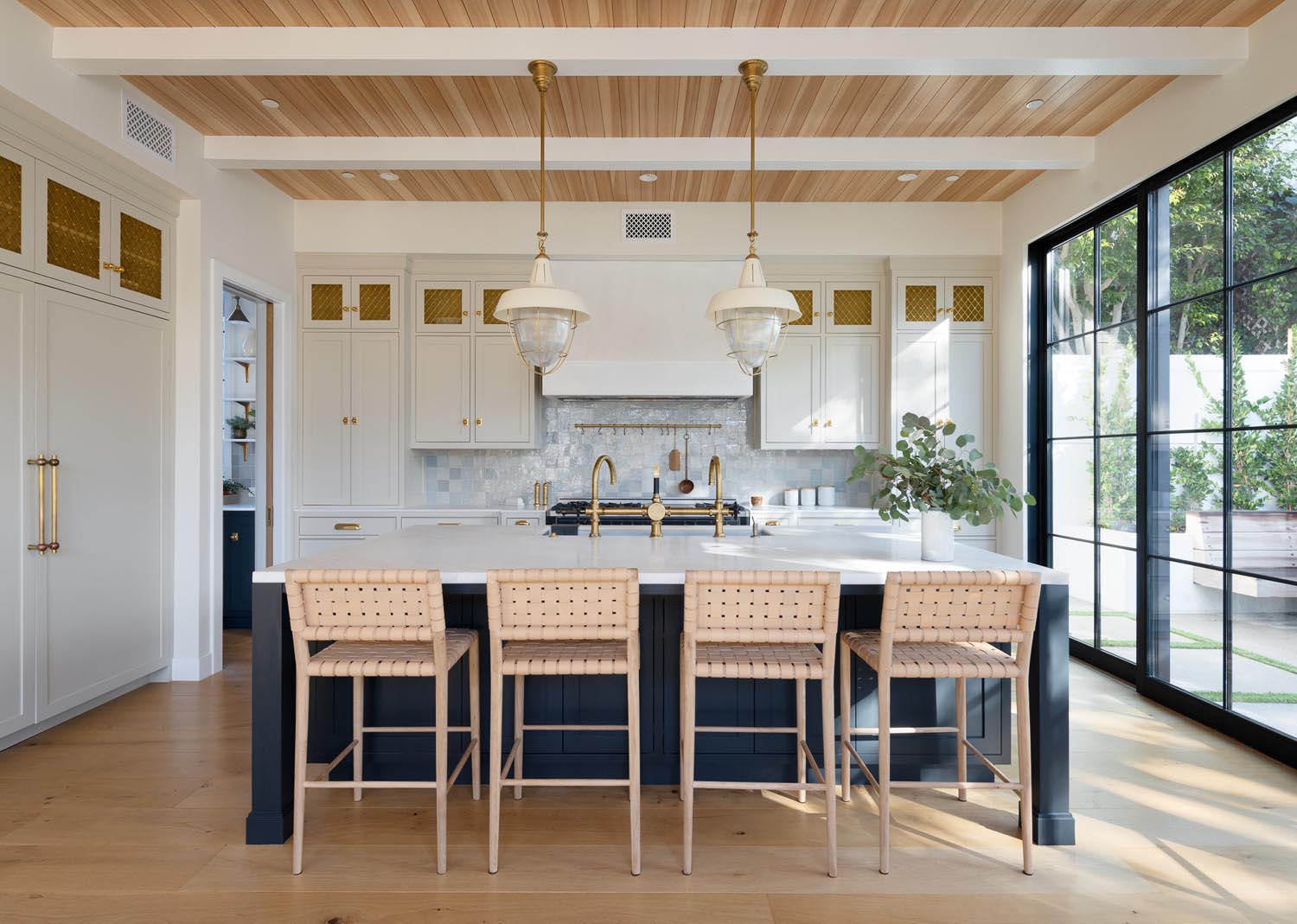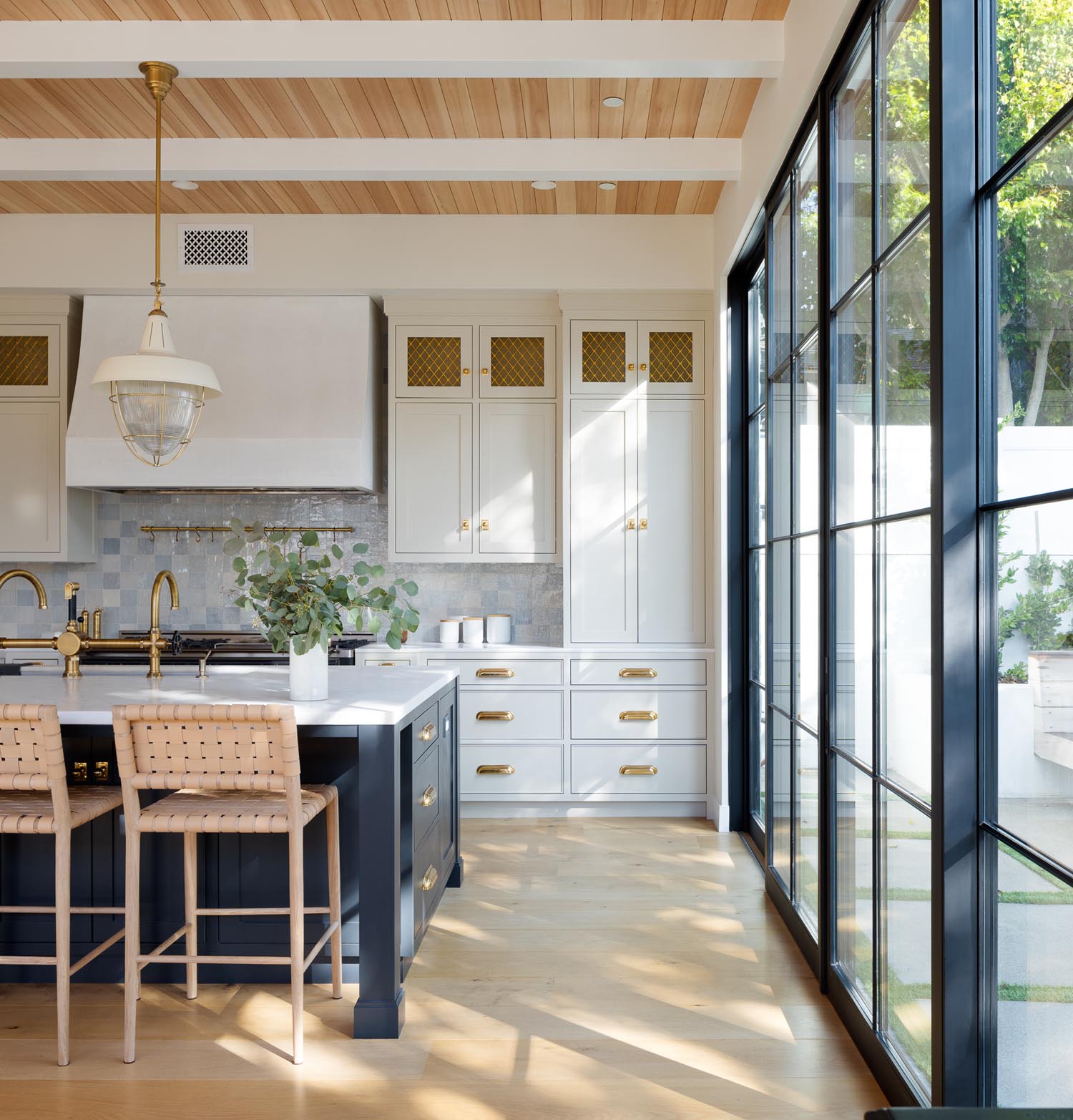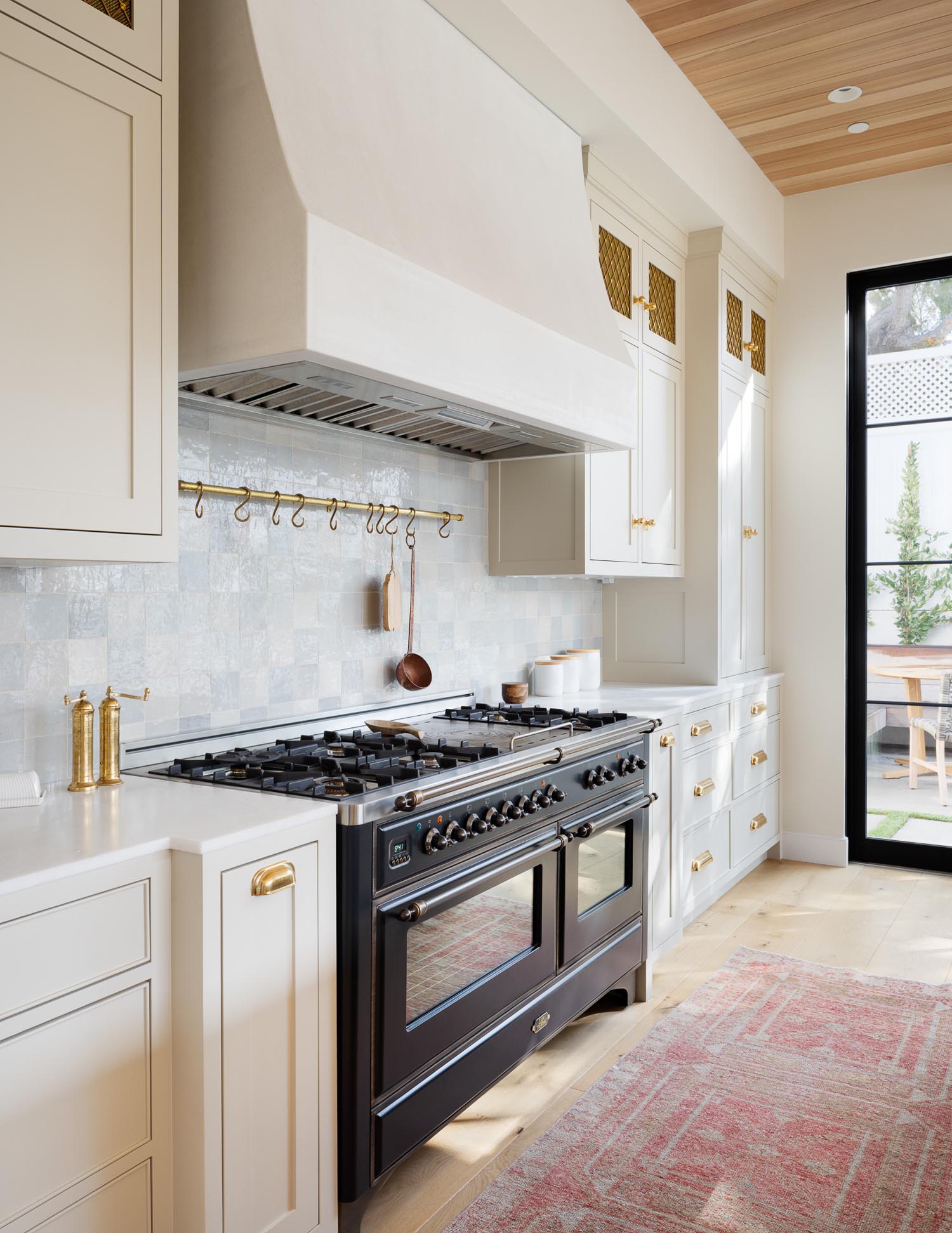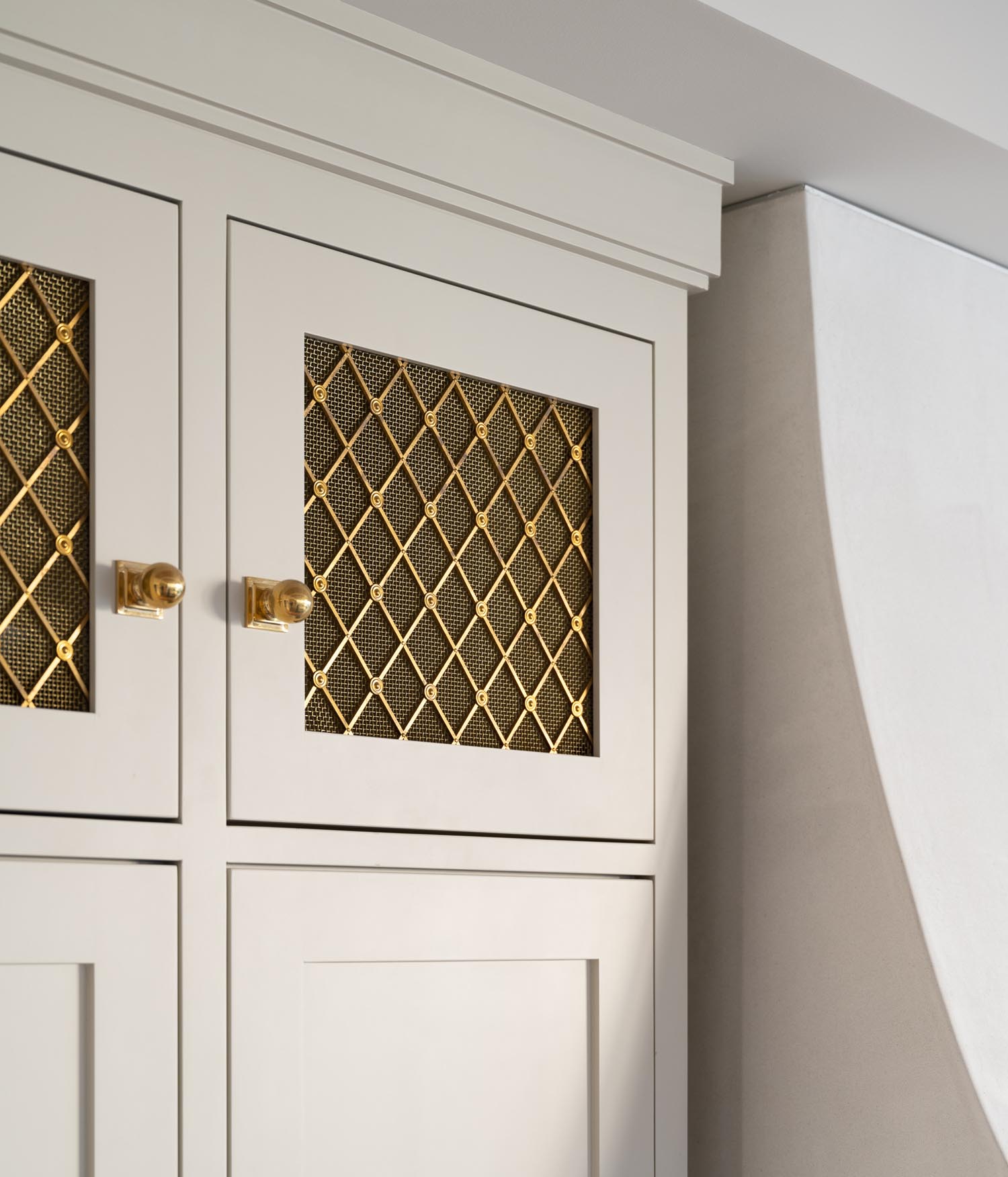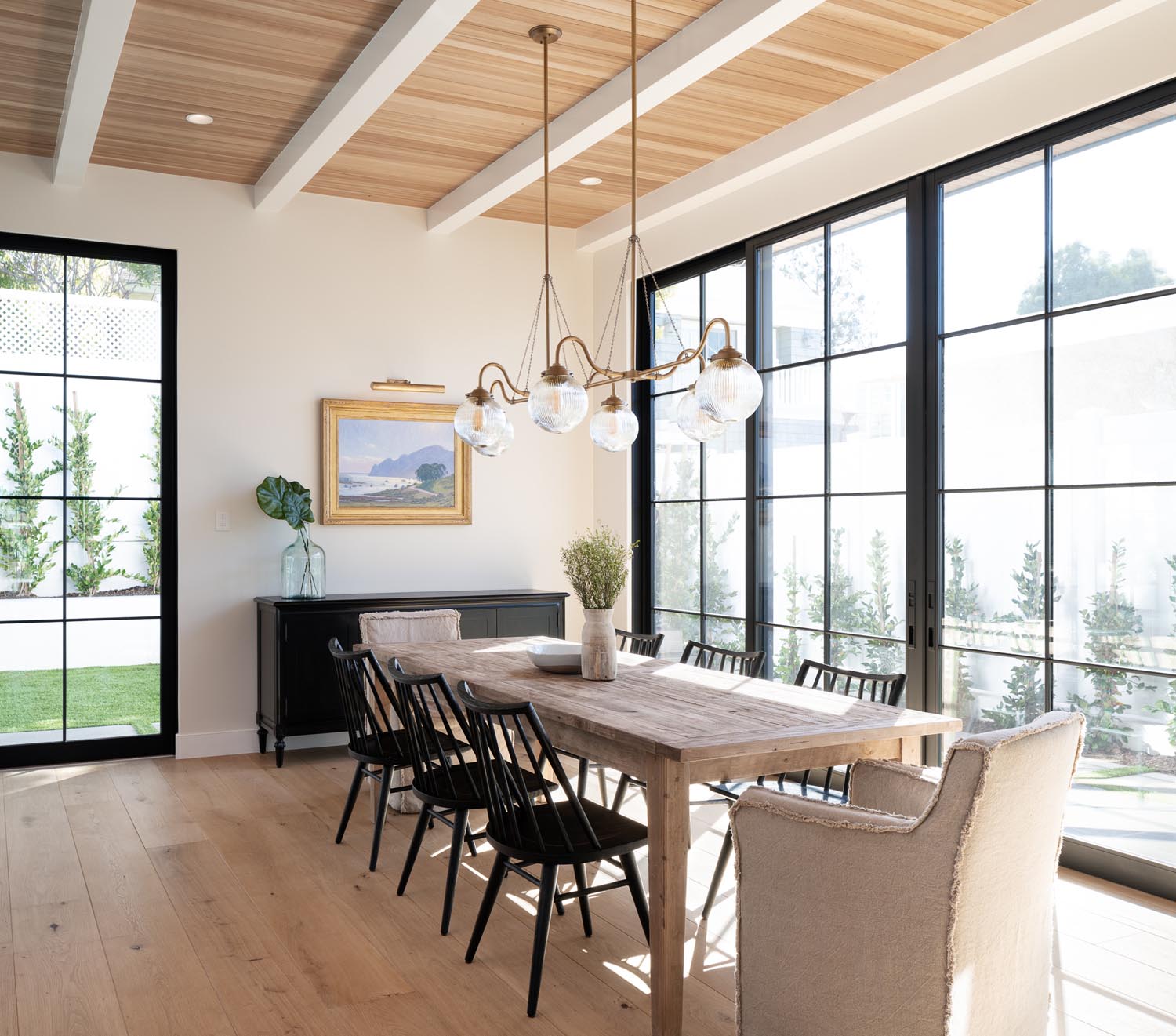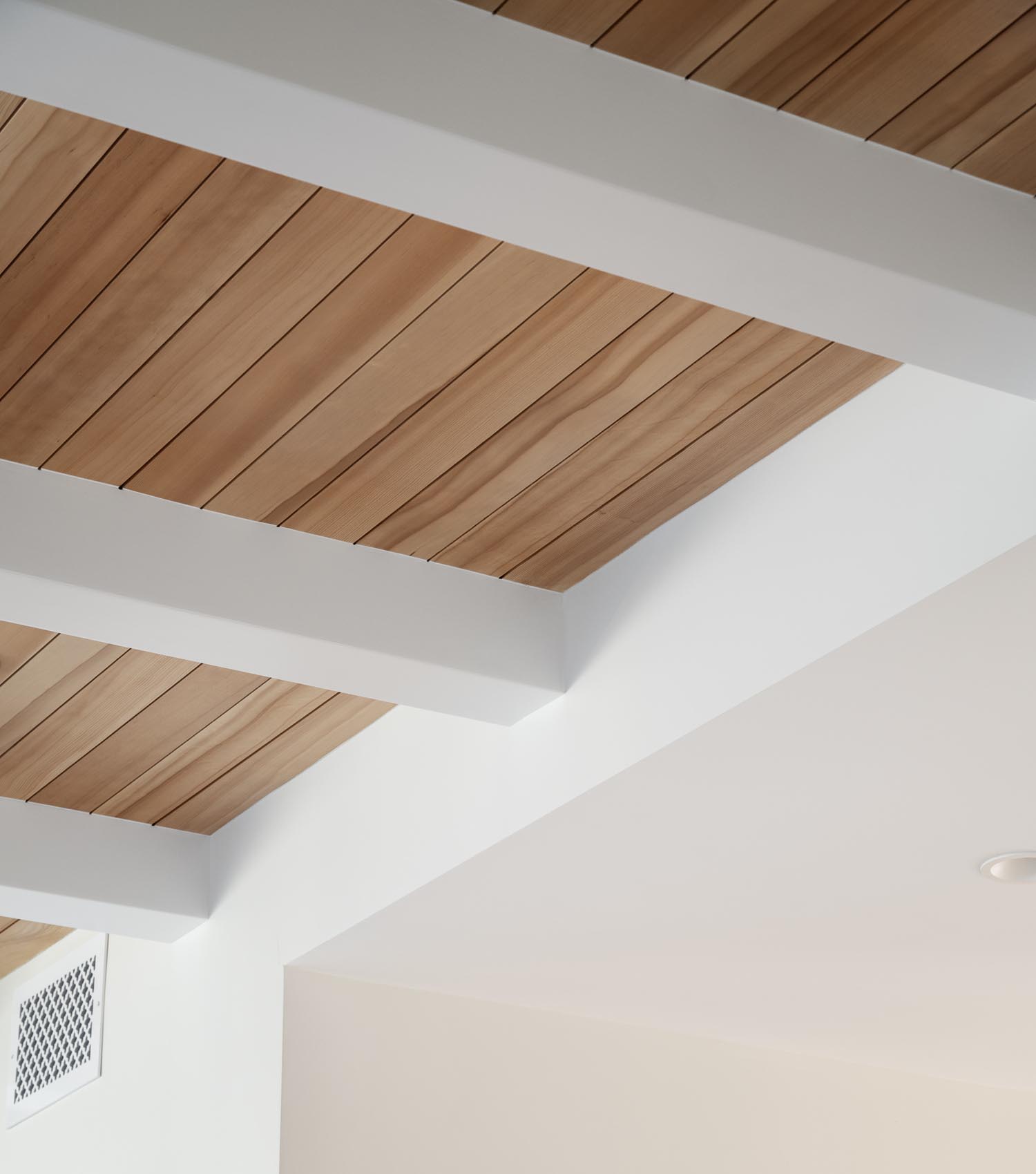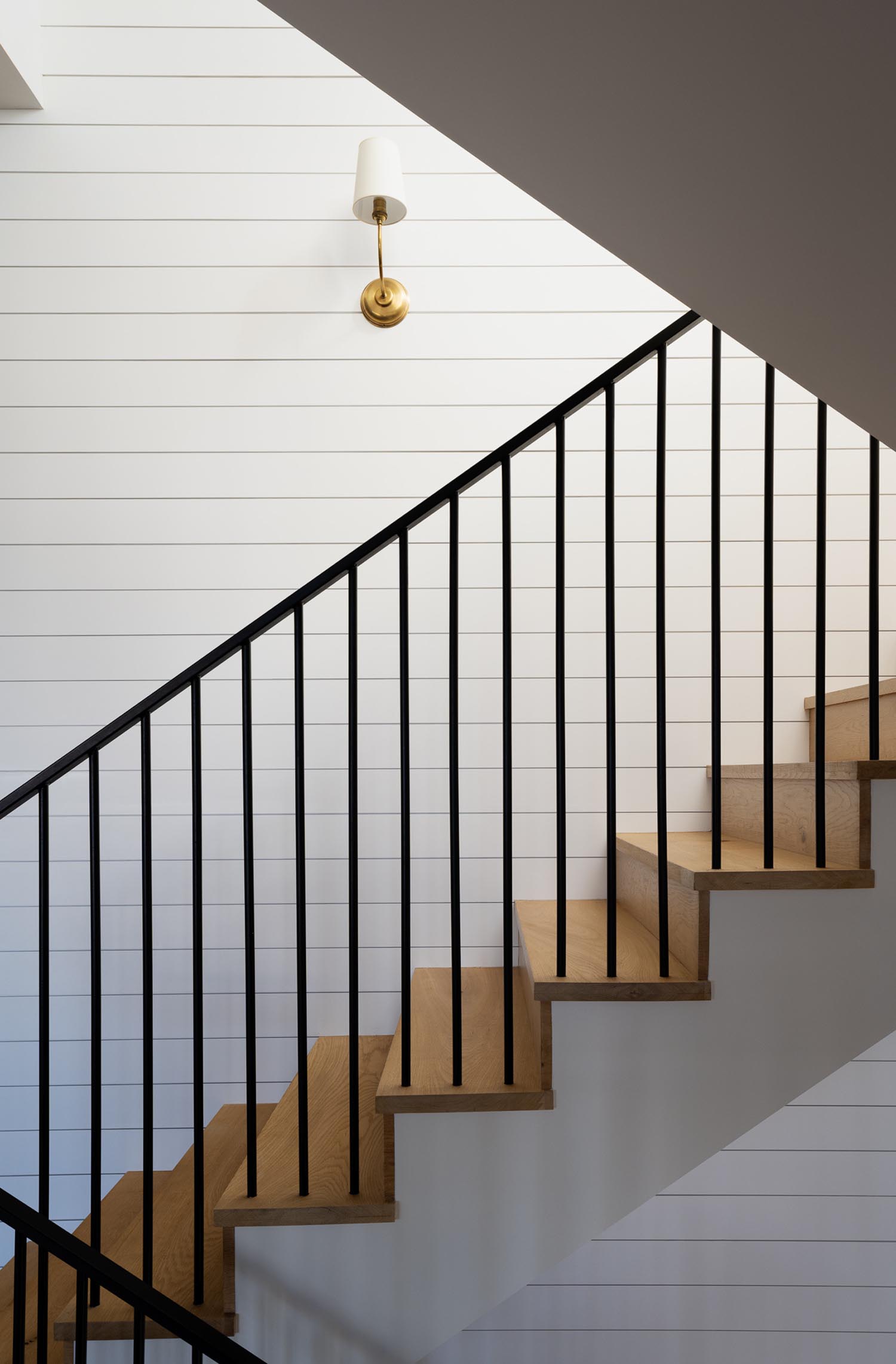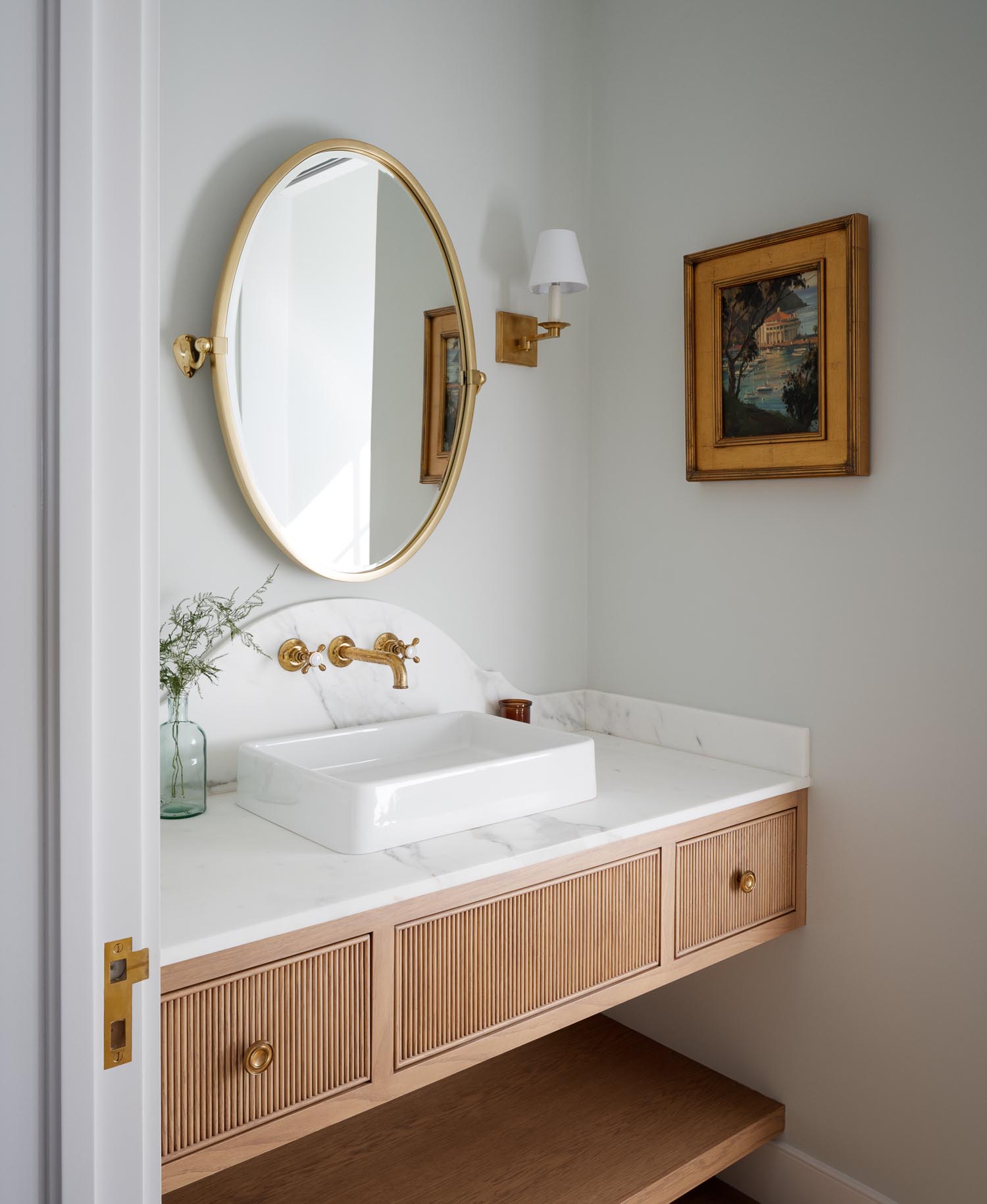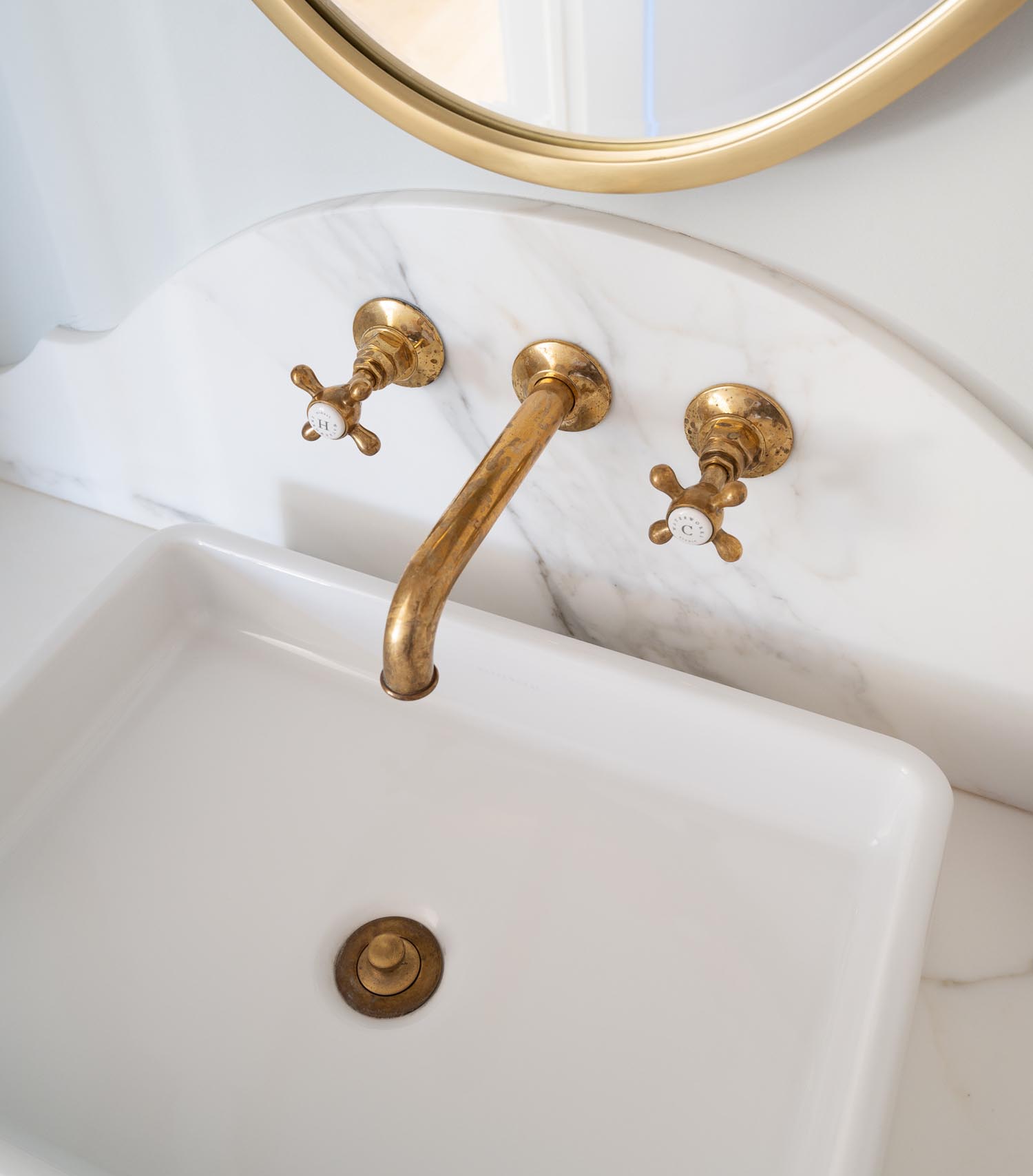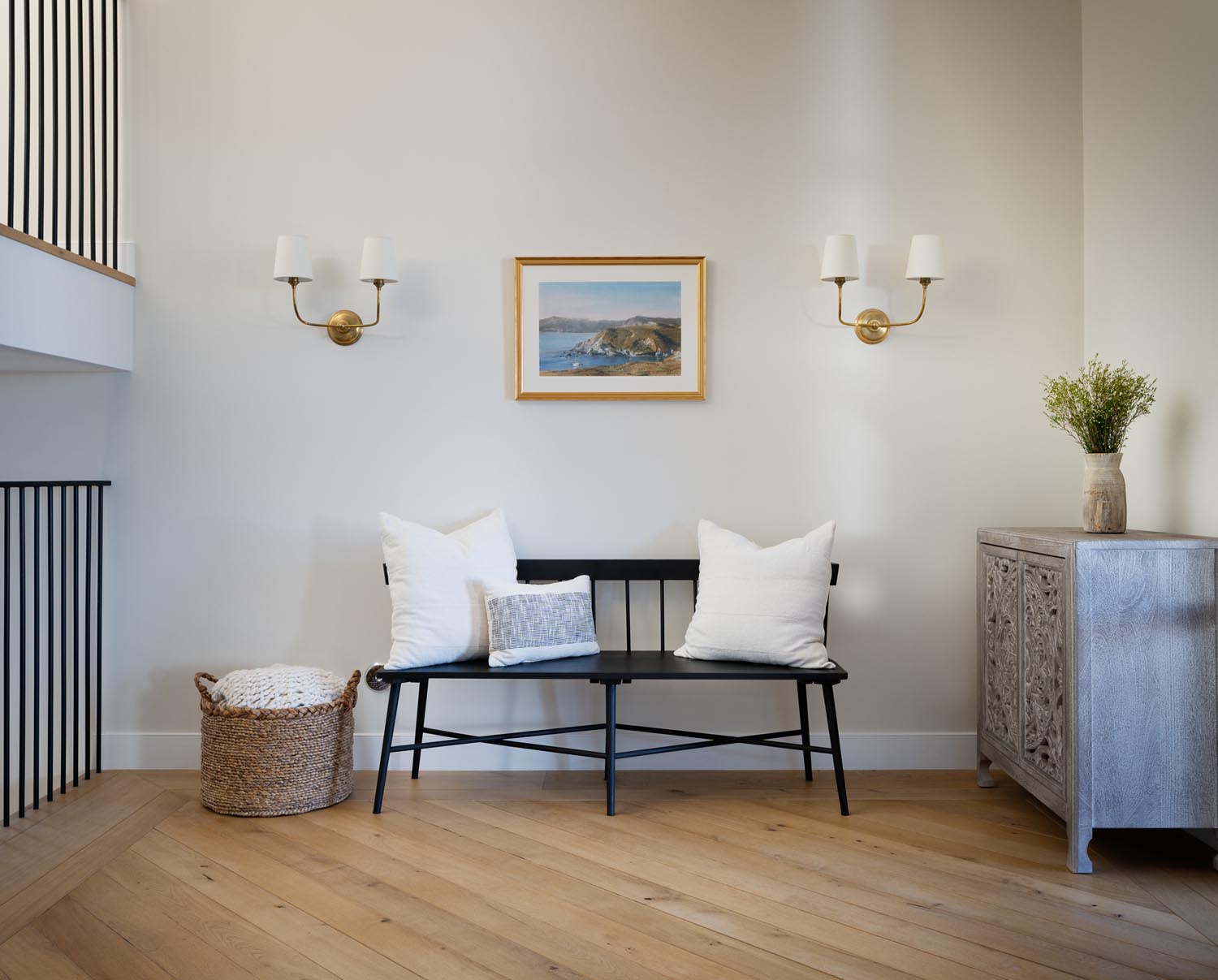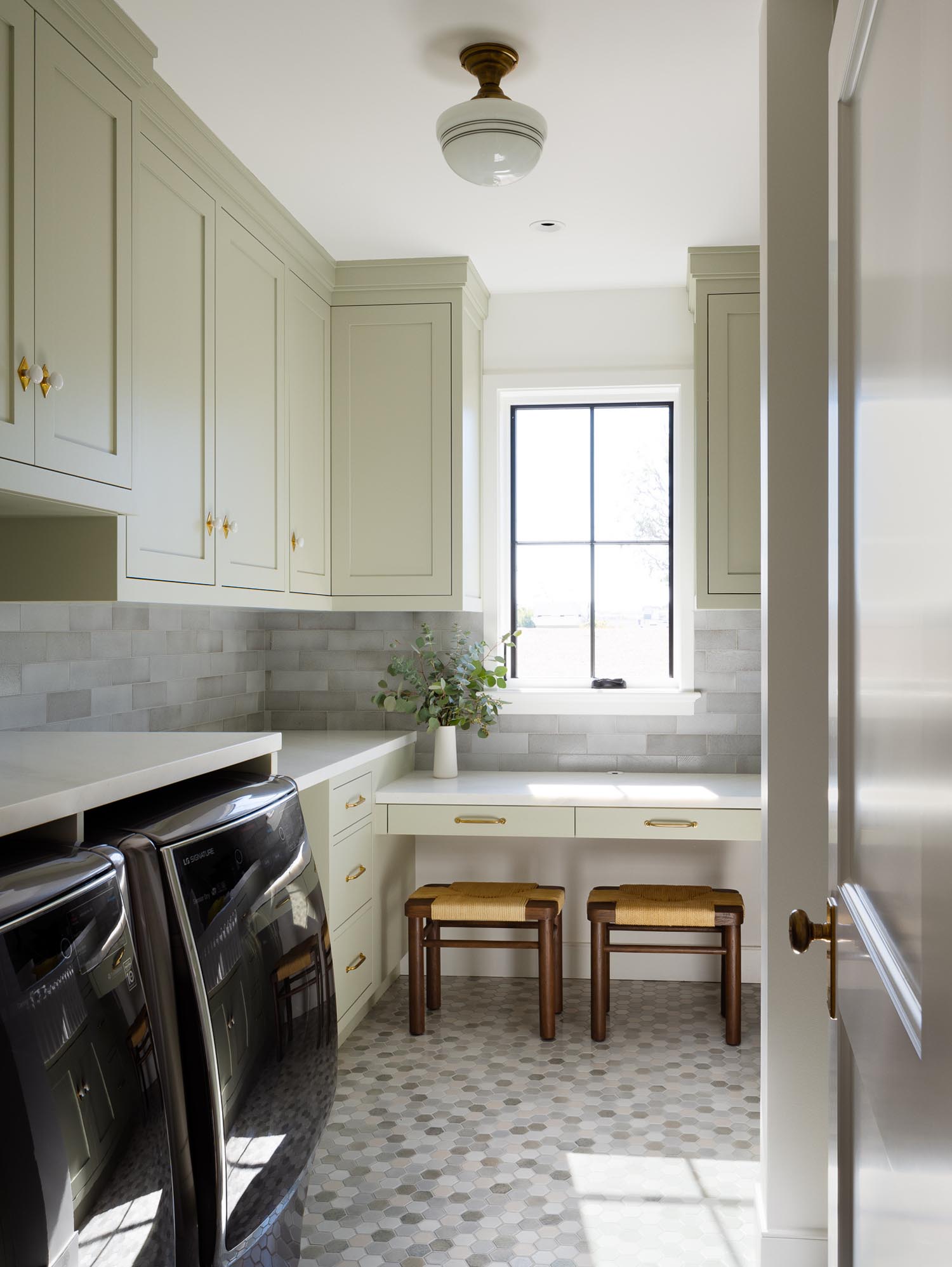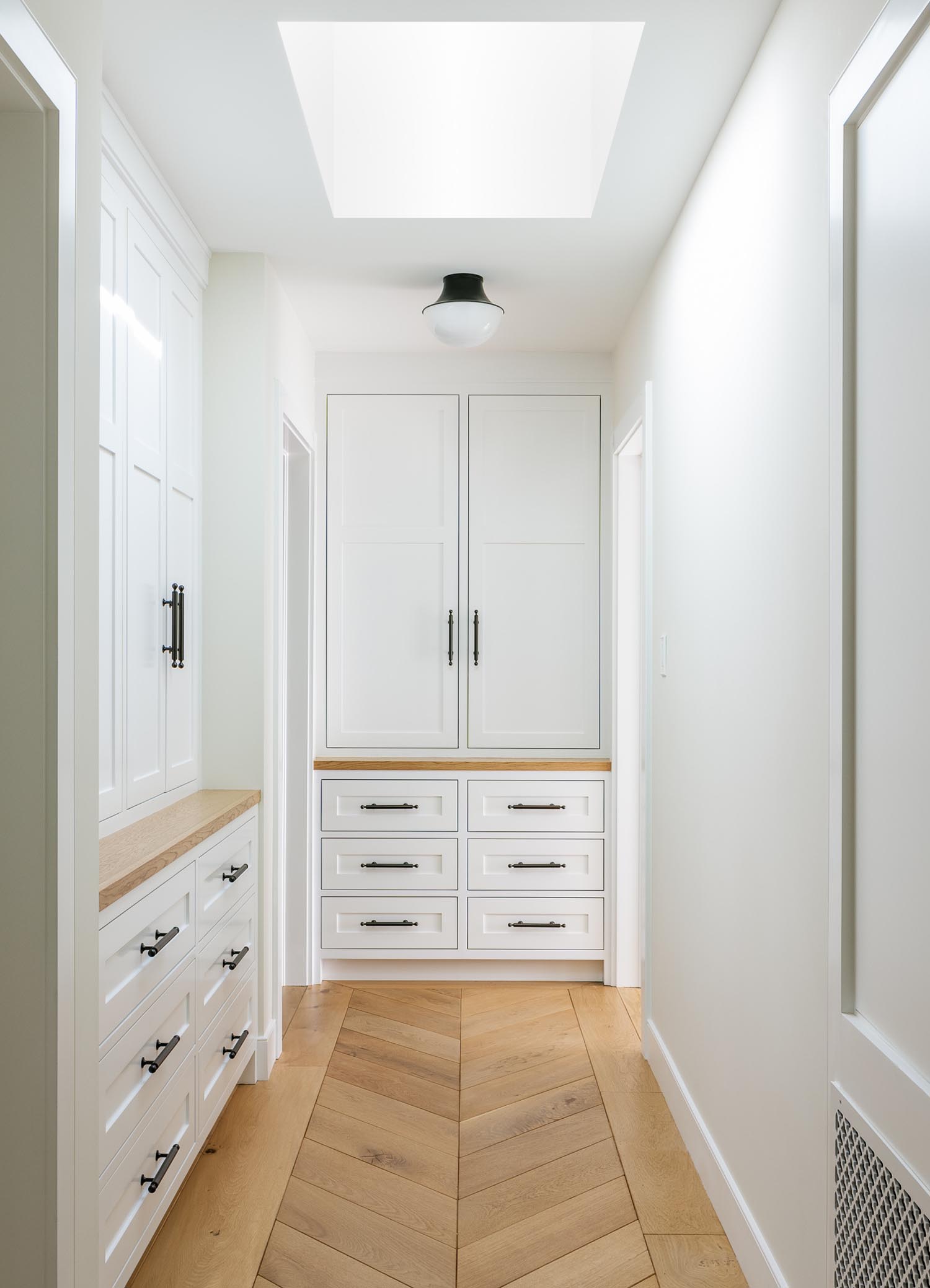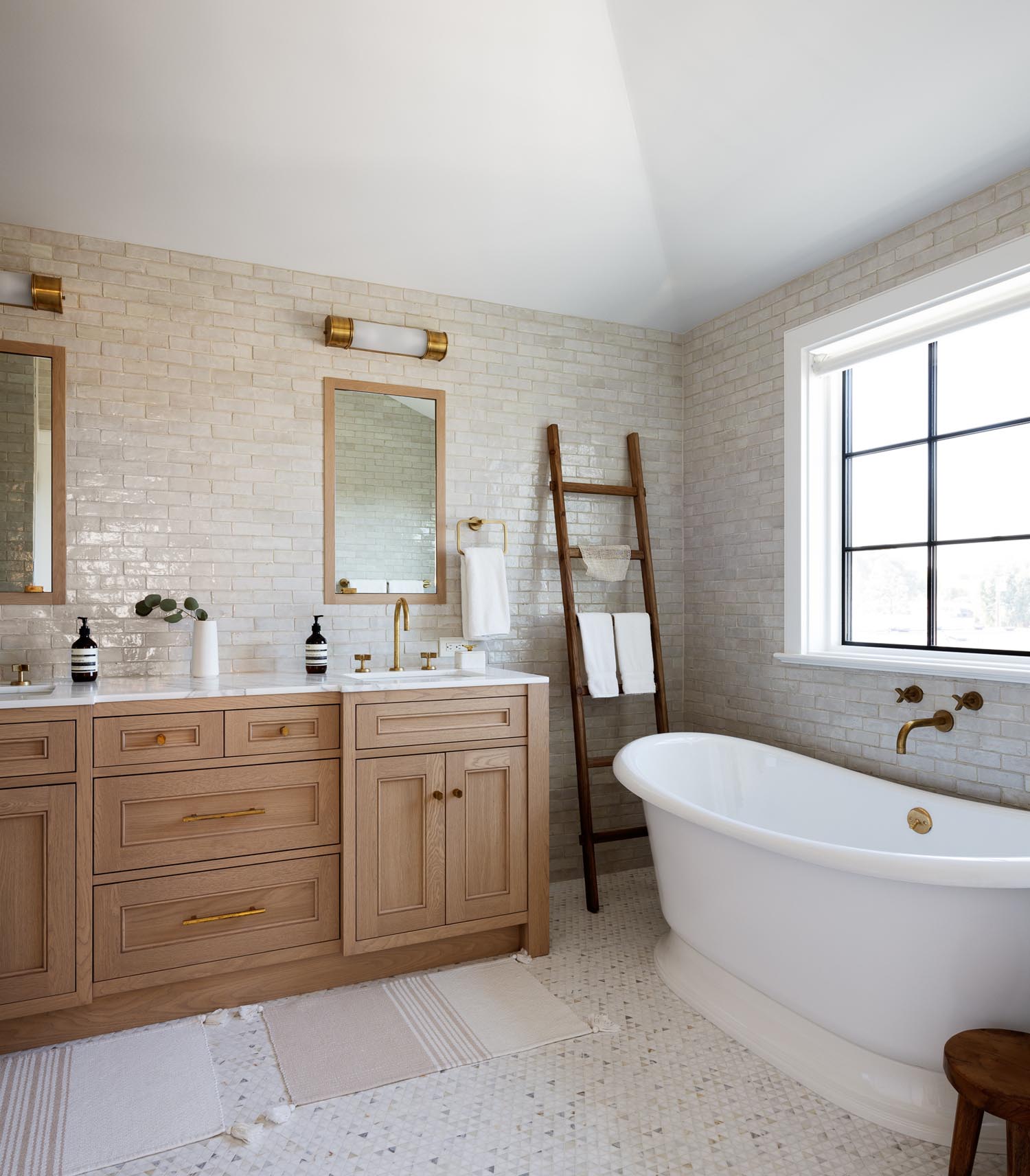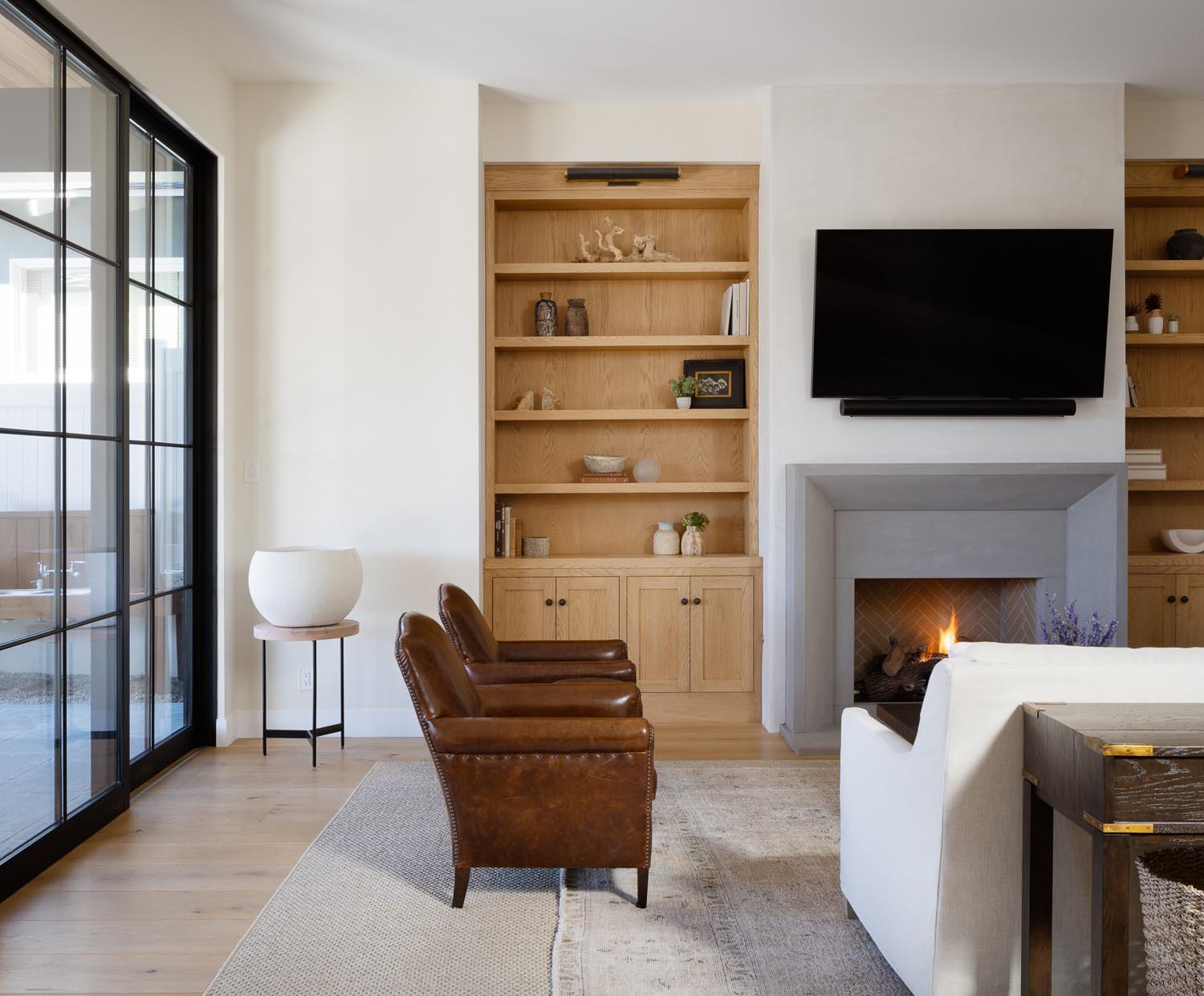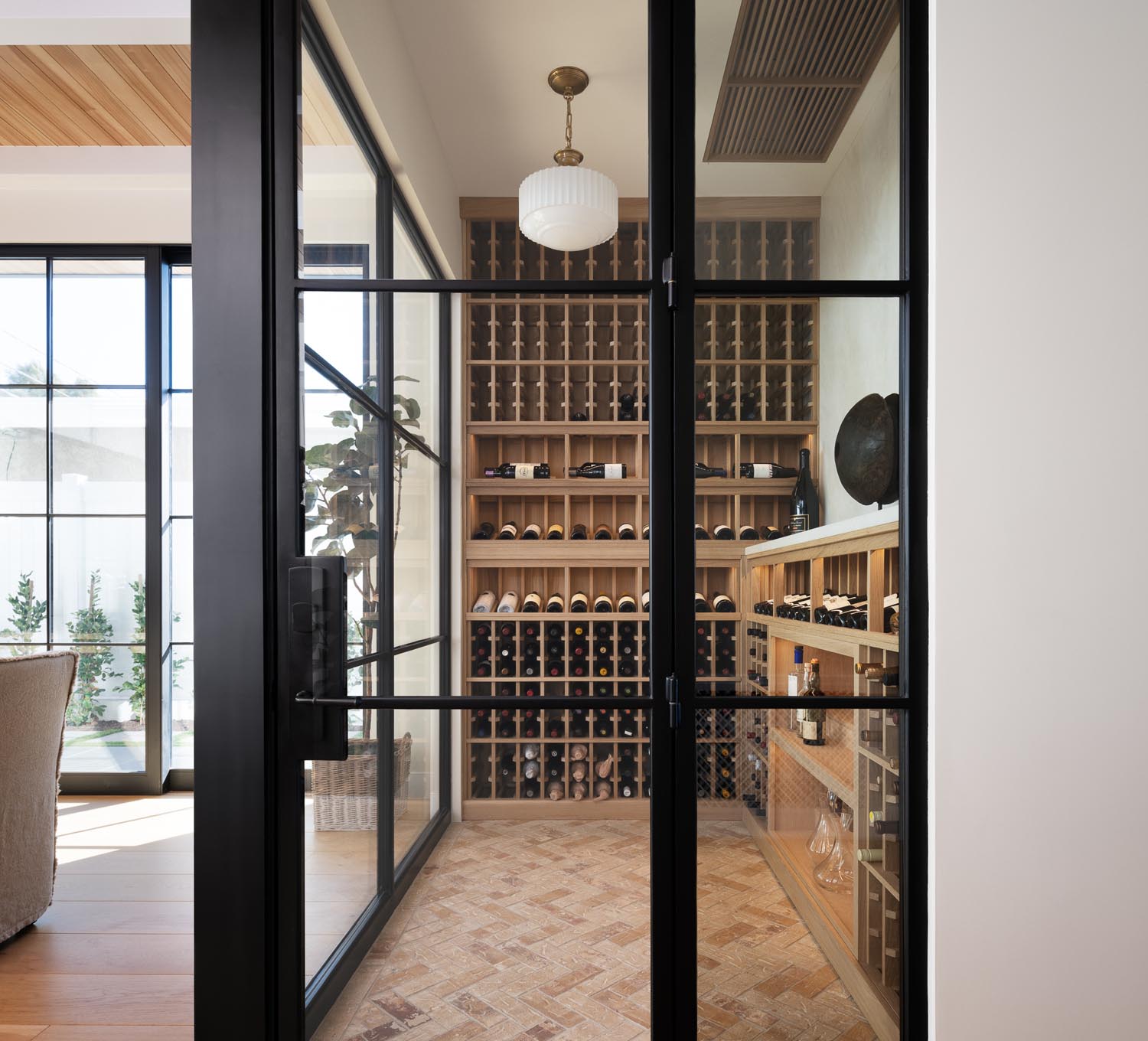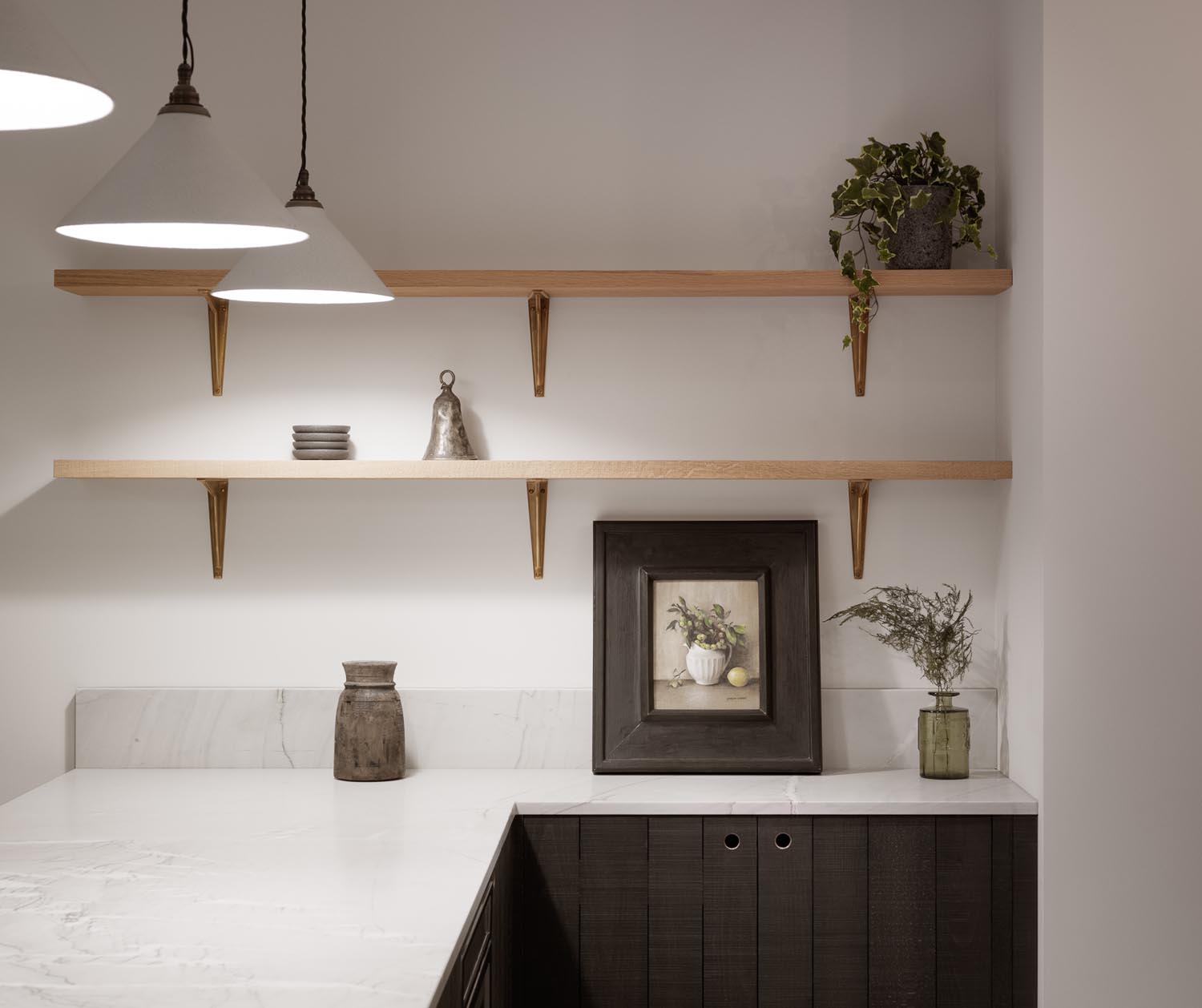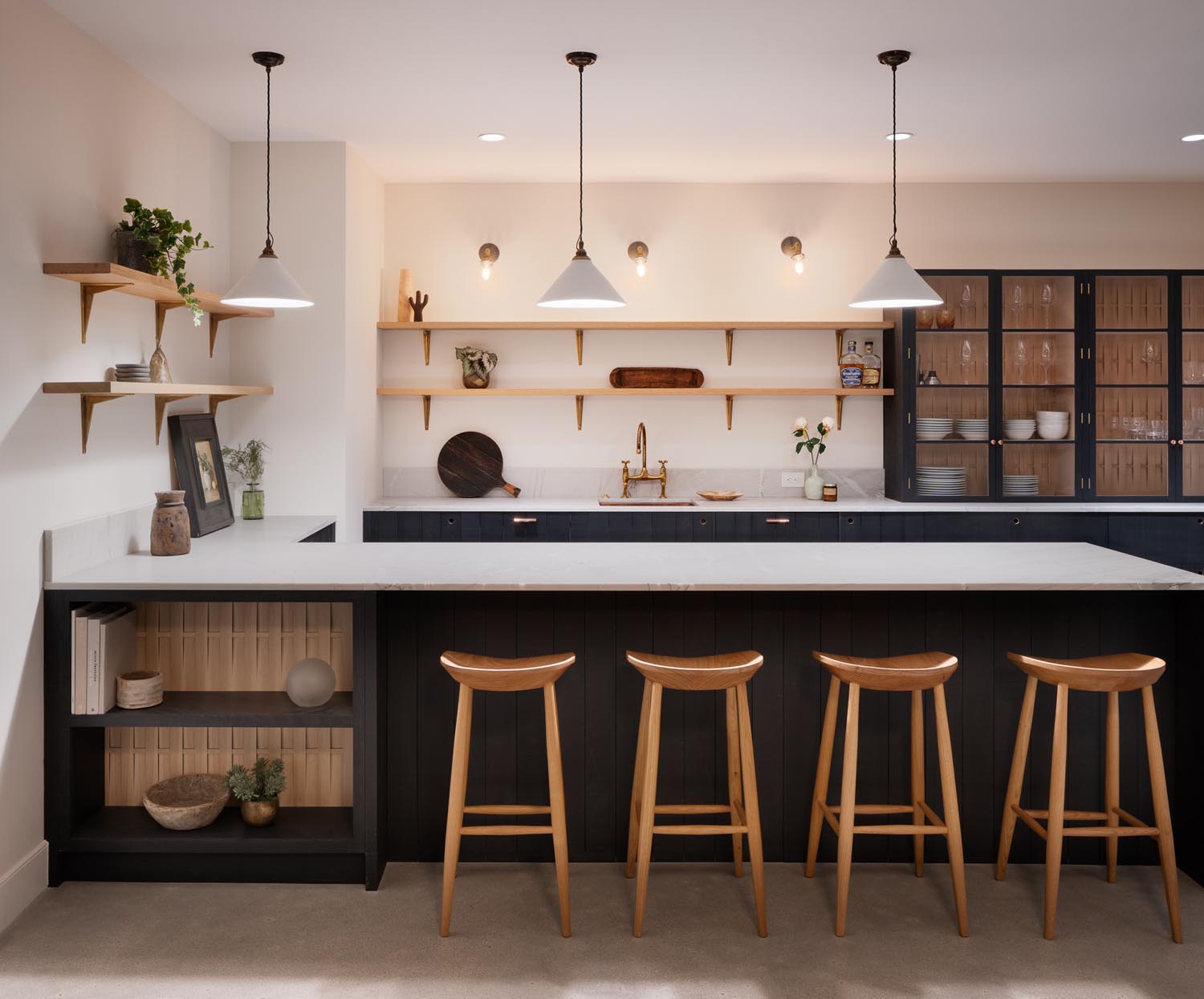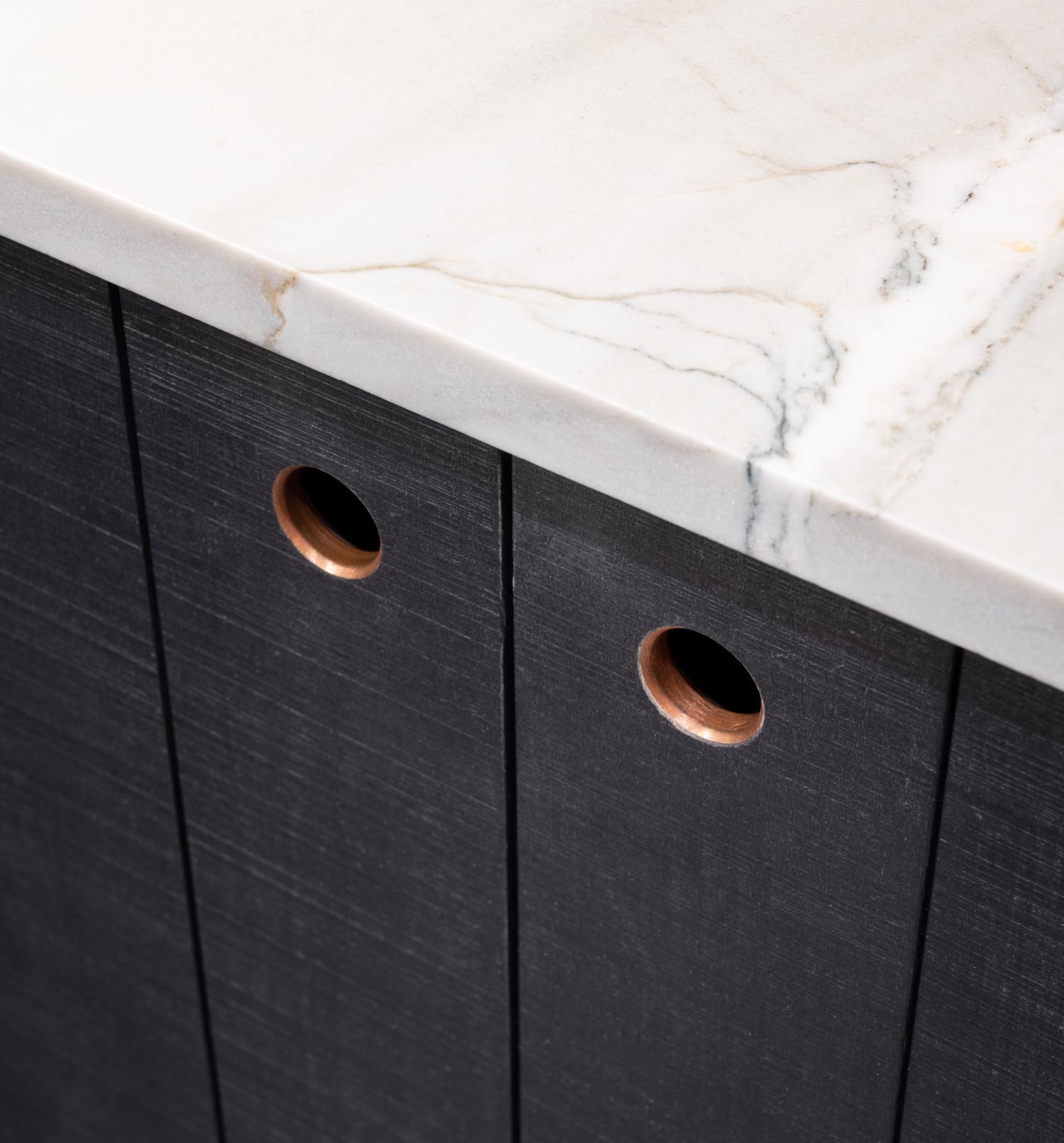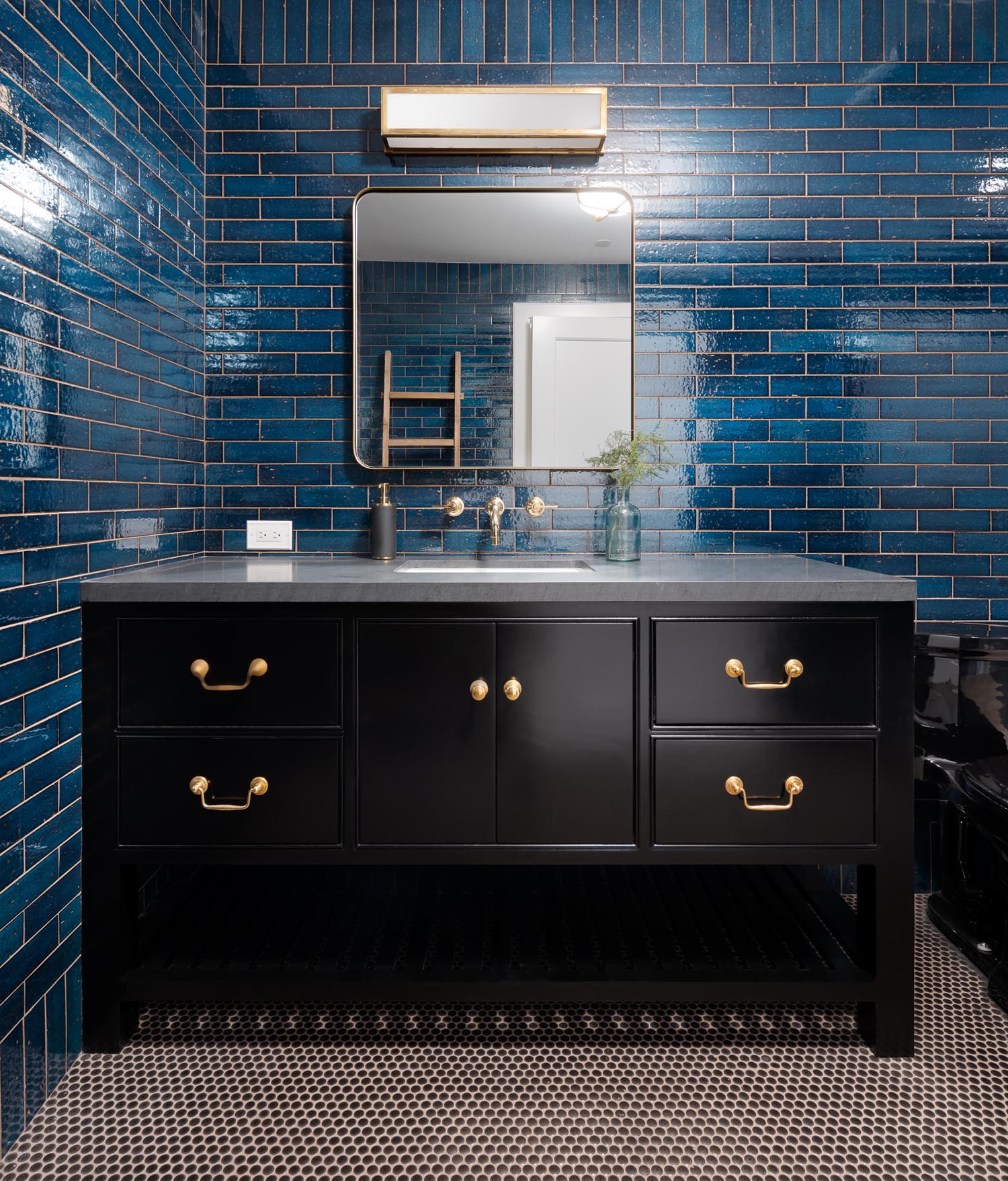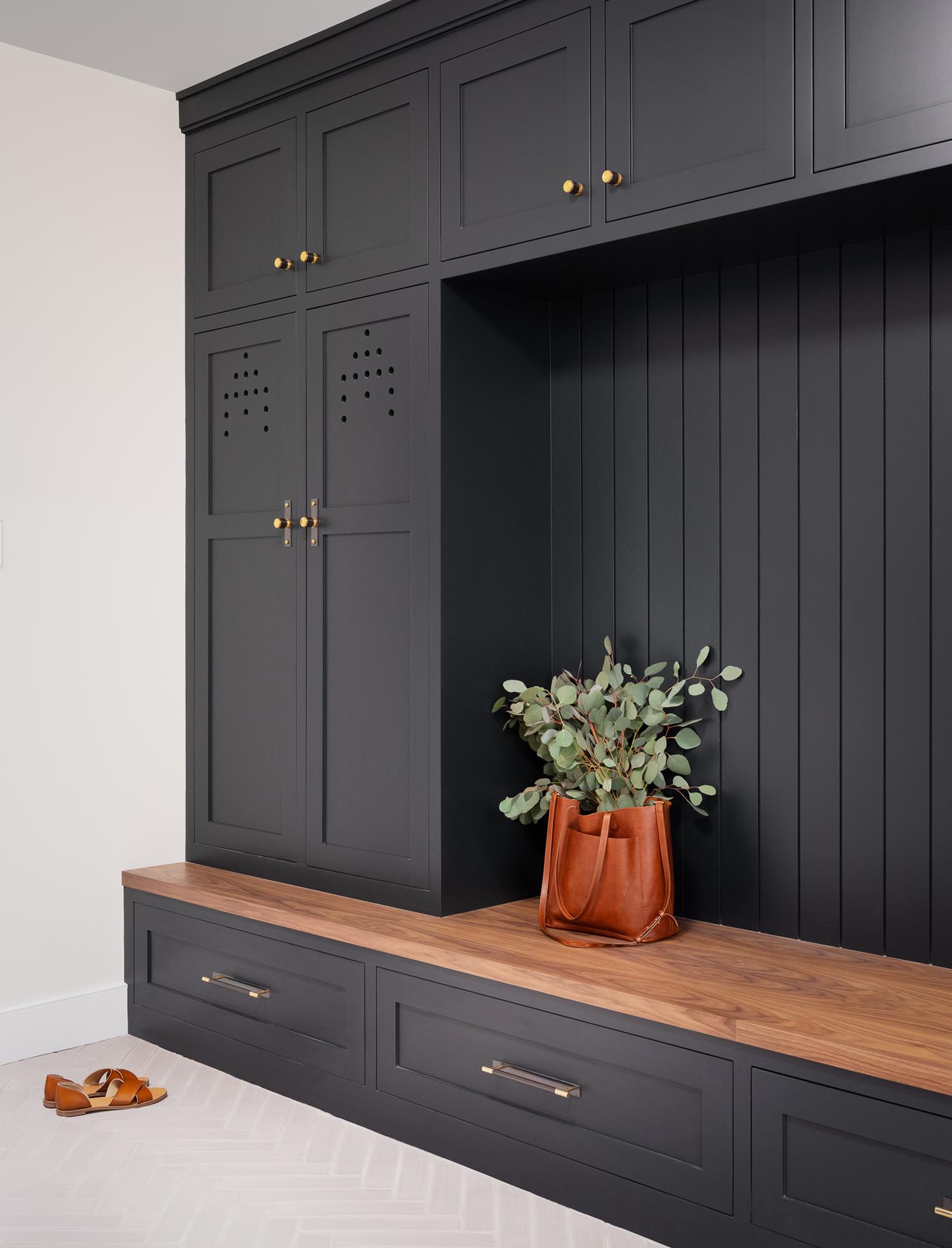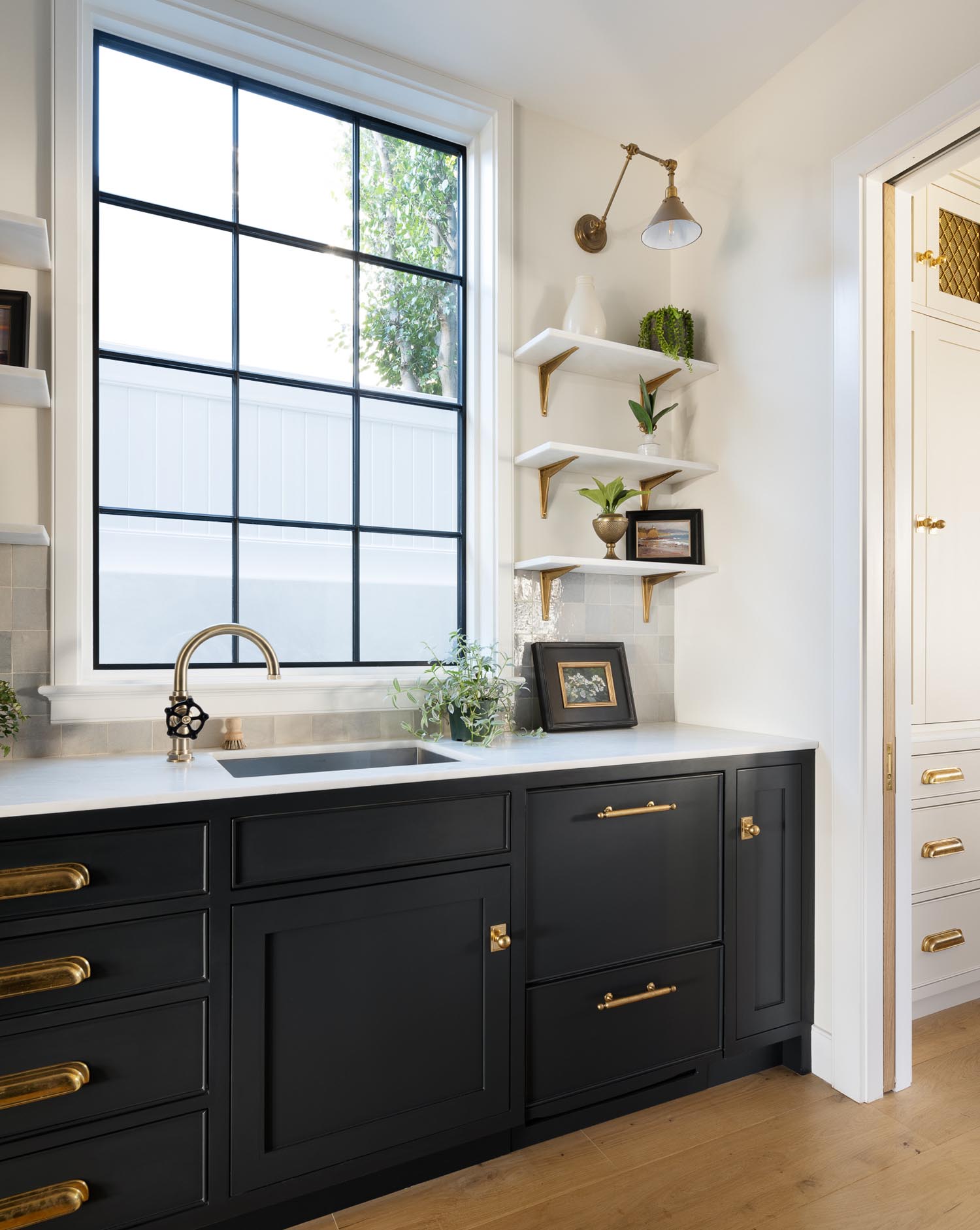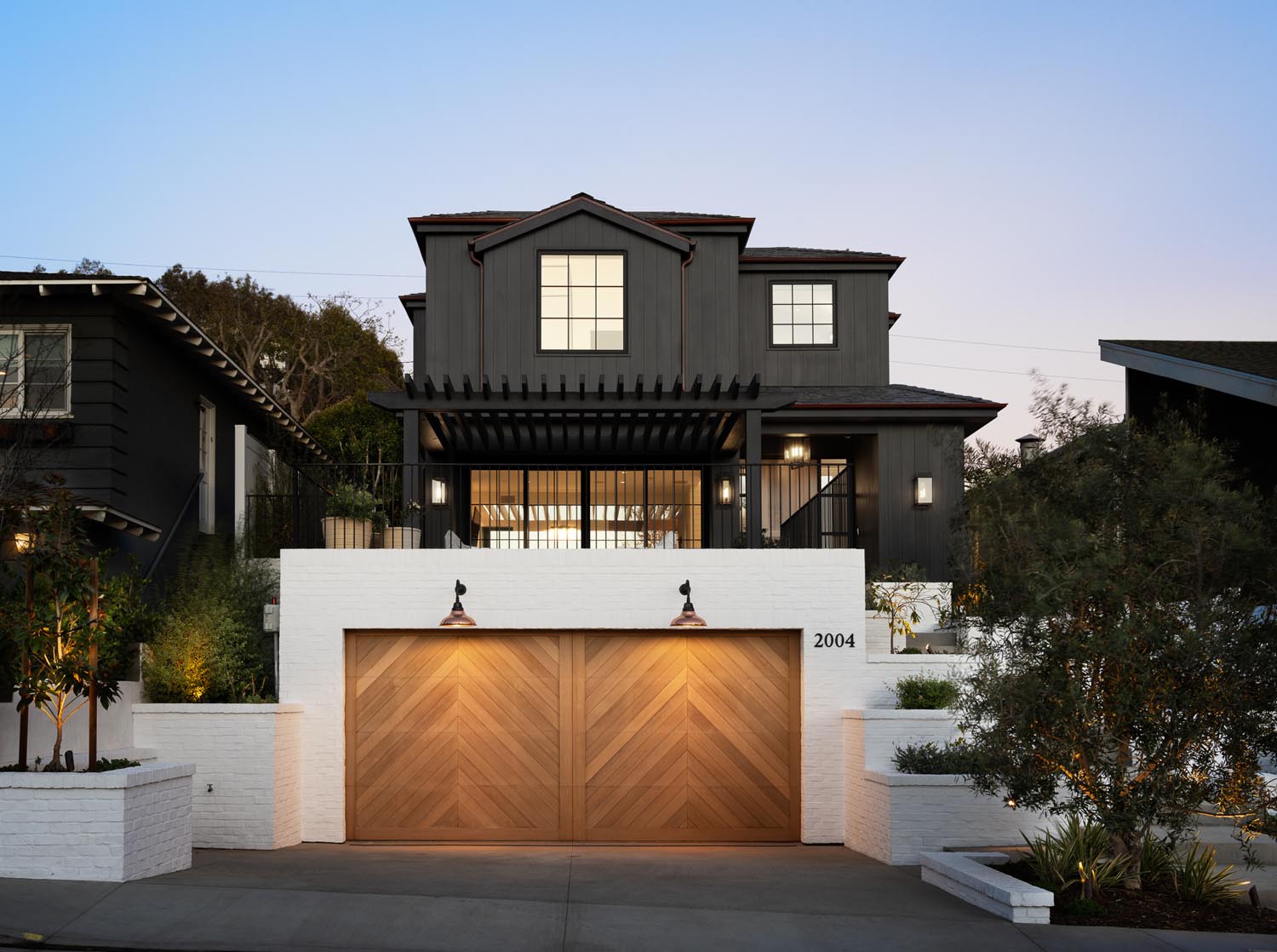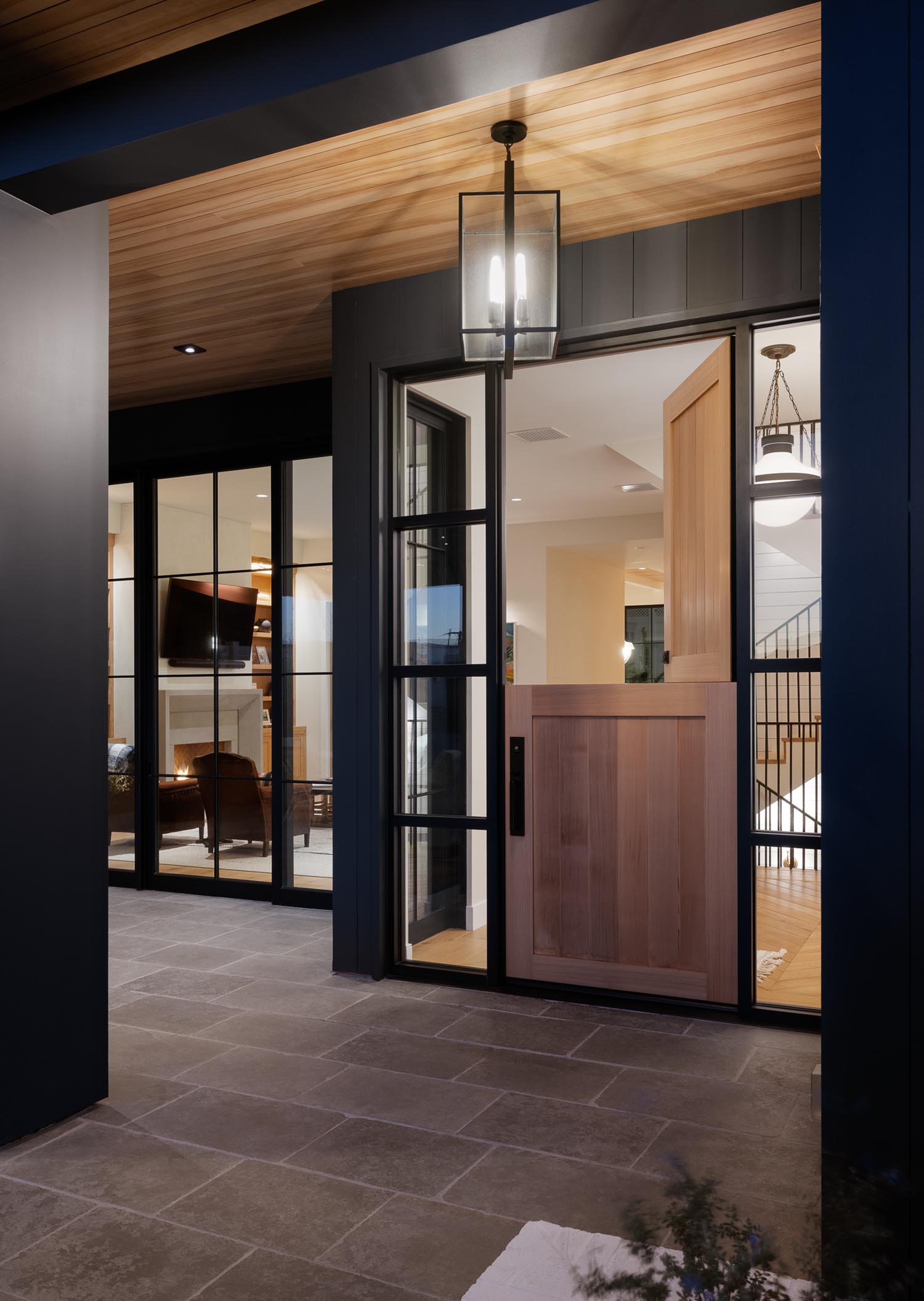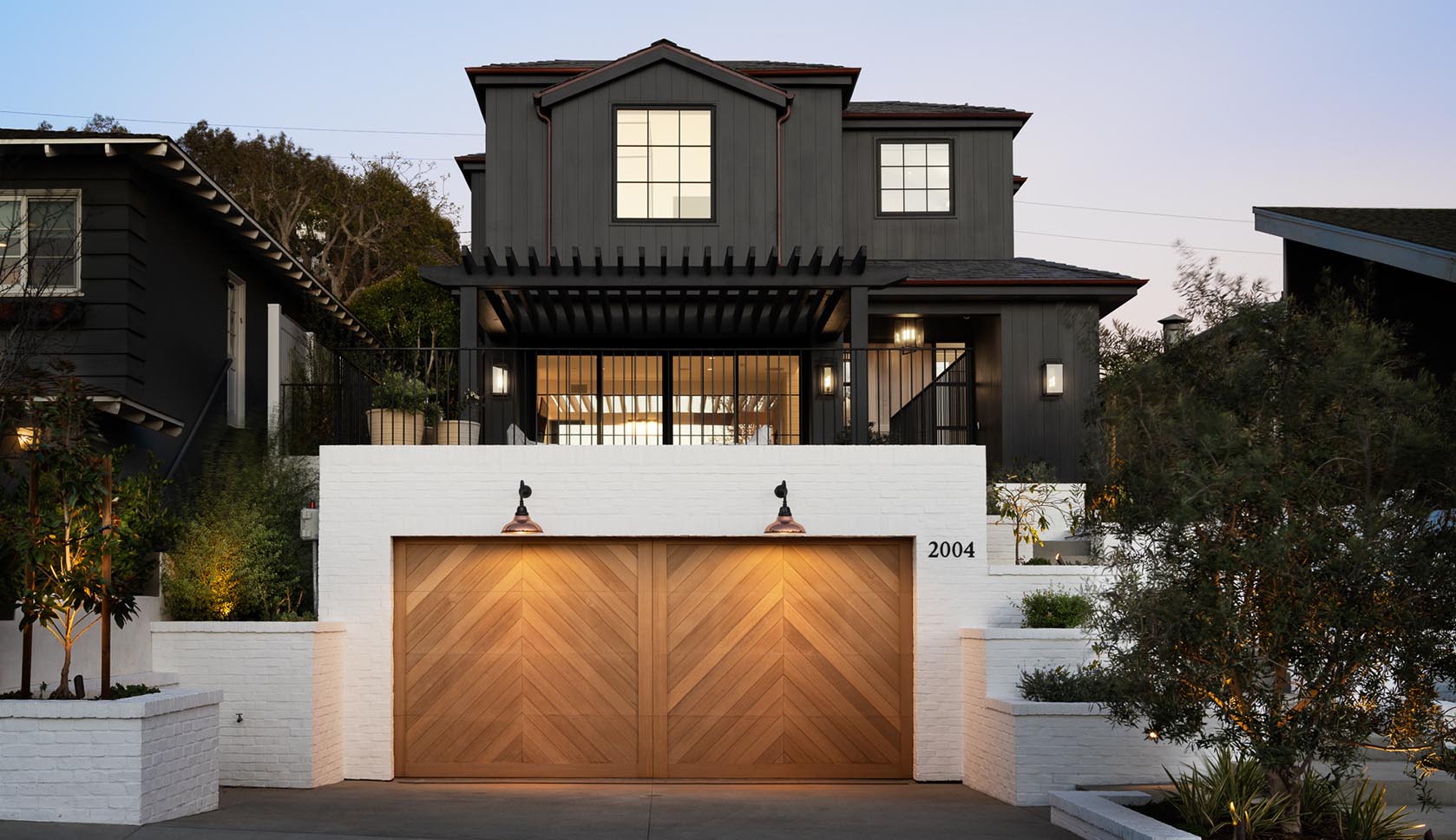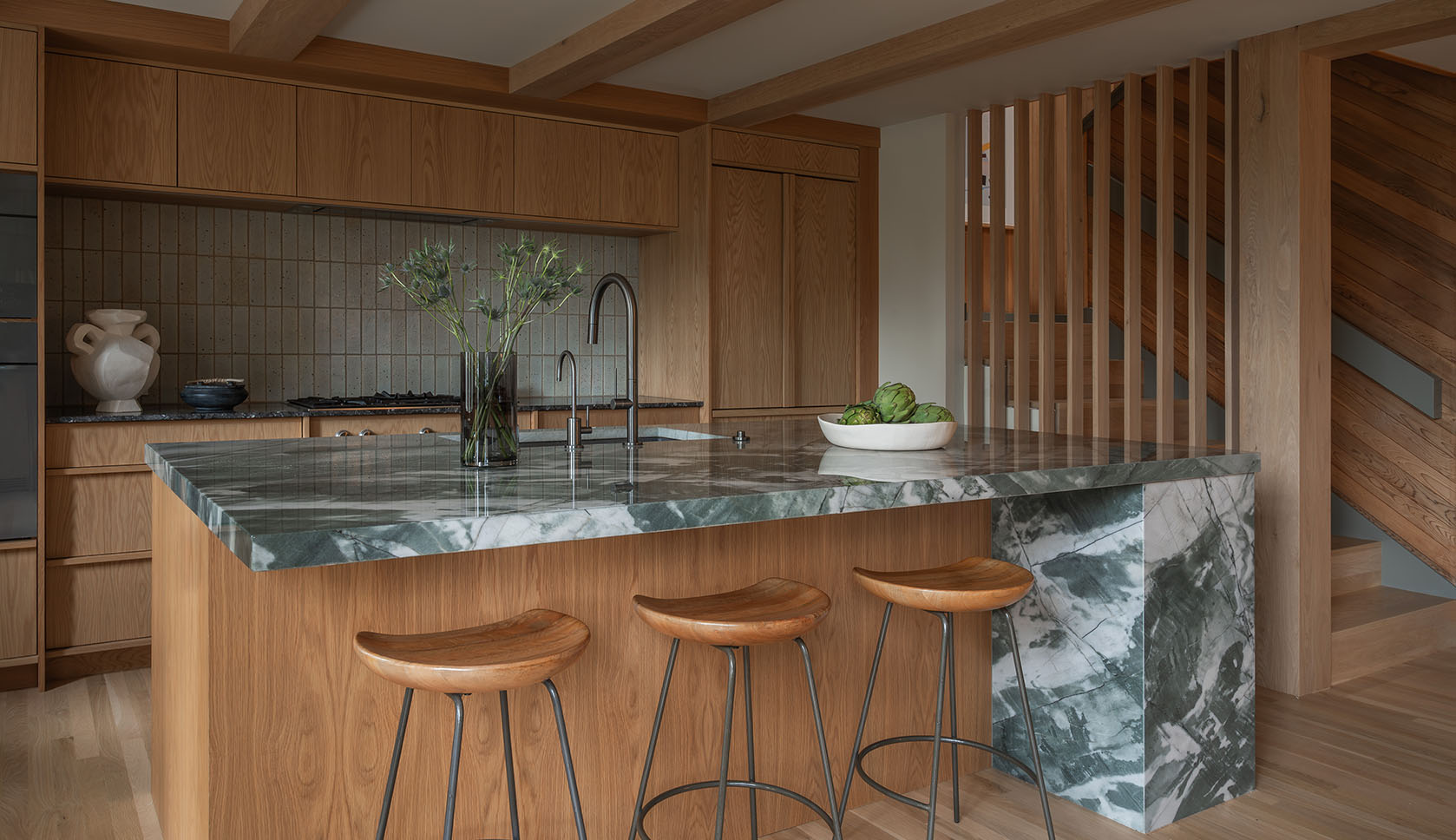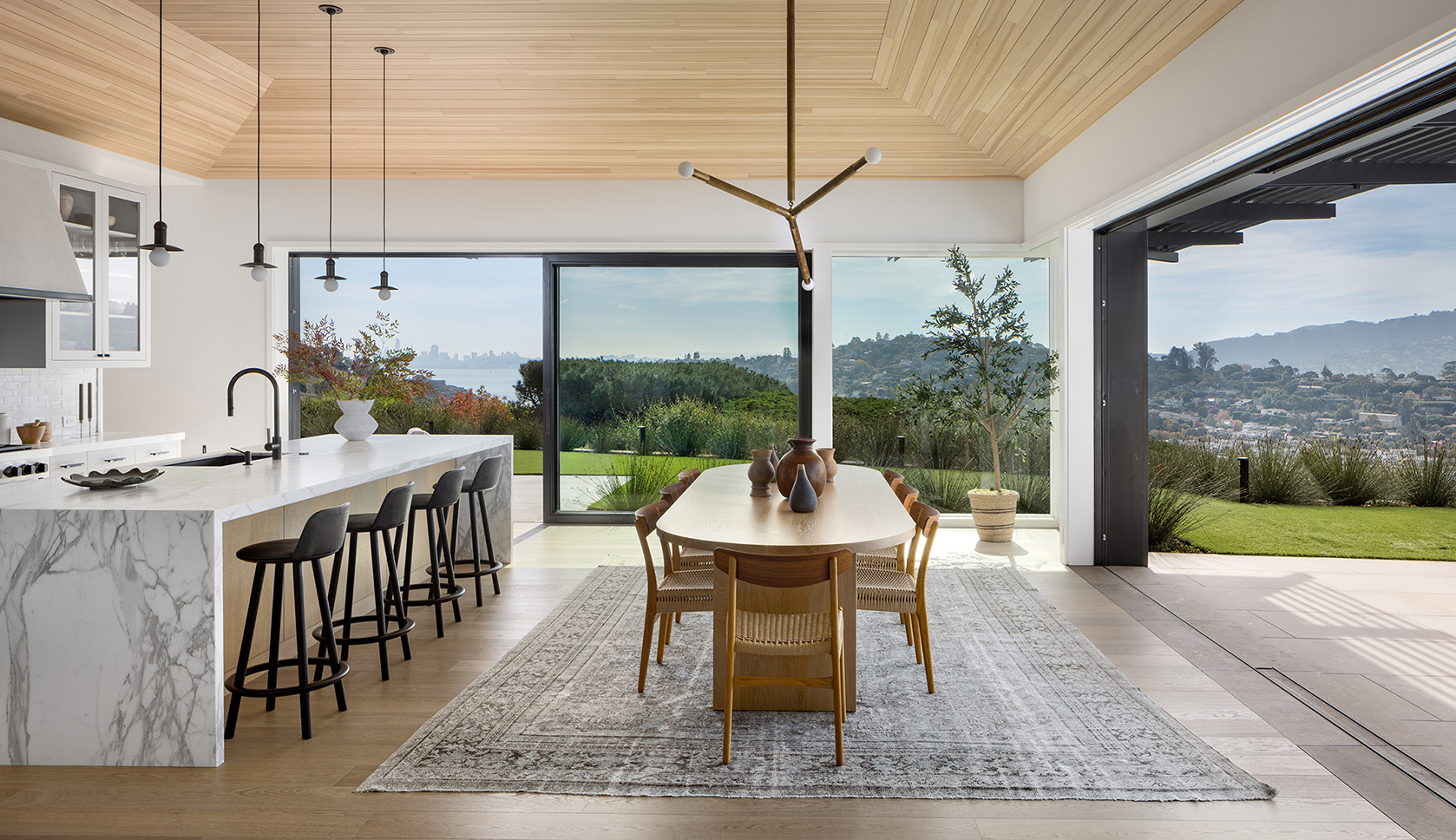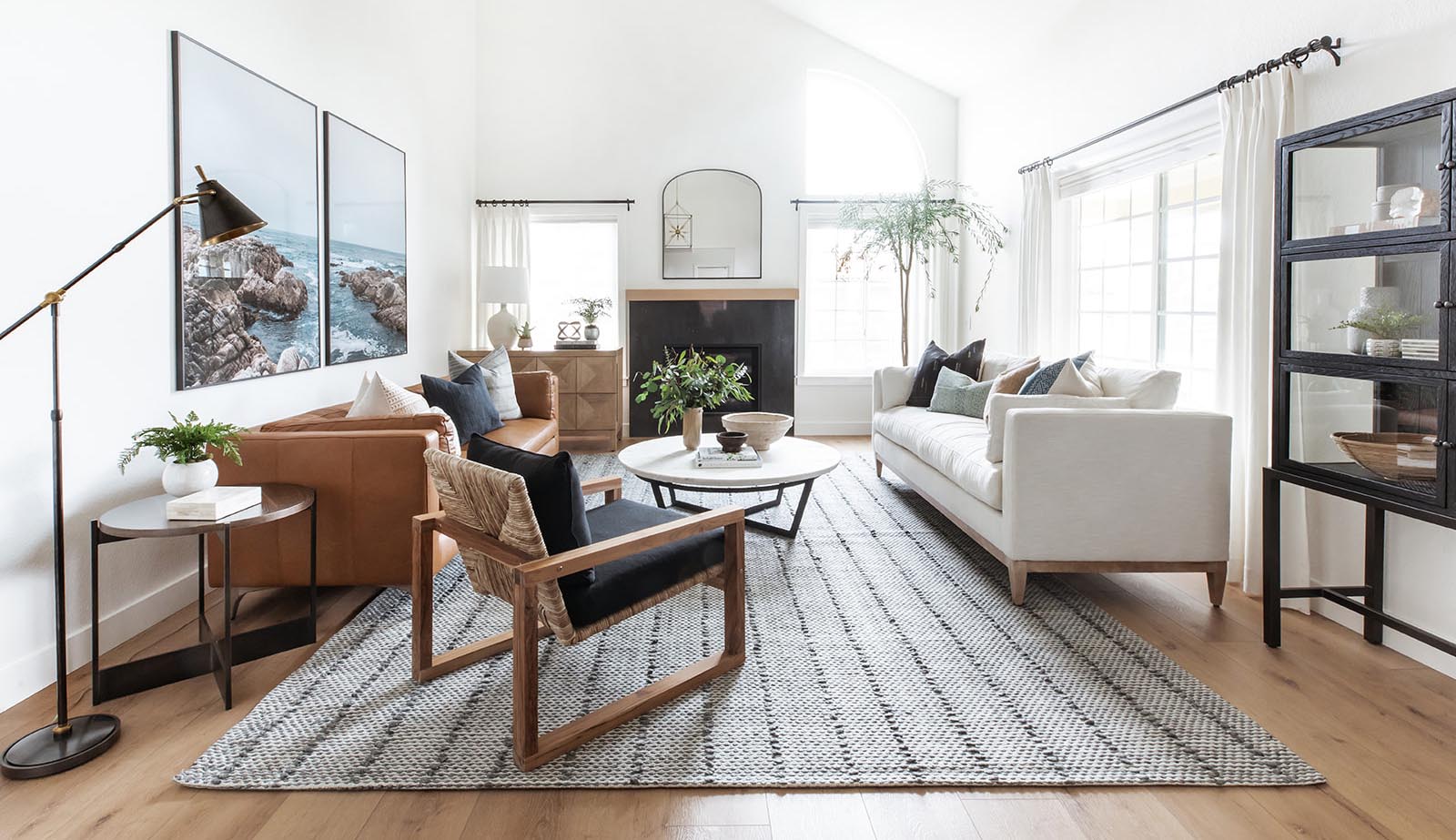Los Angeles architect Anthony Laney decided to turn things around with this Manhattan Beach home – literally. Instead of a sprawling, private backyard, he and his team at Laney LA leaned into community, creating a spacious front porch that encourages community. This area is known for a copy/paste approach to floor plans, so it was a definite change of pace for the area—in the best way possible. Over email, Anthony and his team tell us more.
In a way, the neighborhood played a big part in the look of this home. We’d love to know more about the location and how that influenced your architectural choices.
Located in the Tree Section of Manhattan Beach, the design ambition of this home was to create a new typology for the neighborhood – one that balances the nostalgia of a traditional silhouette with the richness of an unexpected material palette. The result is a home that elevates the neighborhood through contrast.
In addition to the contrast of traditional silhouettes with unexpected material choices, the home unconventionally pushes the house back, and places the “yard” above the garage. This creates both a connection to the vibrant, family-friendly street and privacy for the residing family.
As you began this project, what were some of the elements that helped shape the design brief?
Our starting point for the design was all about the “family” and the “village” context that surrounded them. Our goal was to create a home that balances the flow of a family lifestyle with the social richness of being connected to the street.
Best described as “modern transitional”, we did not want to create a three-story tower, but rather opted for an accessible, two-story structure grounded by the plinth of garage and landscape. This, again, helped create an accessible, pedestrian-friendly facade, while facilitating private family living.
Let’s talk about that. You opted for a large front patio instead of a traditional backyard. It’s a bold choice but we’re into it! We’d love to know more.
While most neighboring homes prioritize the backyard, this home intentionally does the opposite. The primary outdoor space is located above the garage, facing the street. This allows the home to have a gentler facade and a stronger connection to the street, creating a more vibrant and social atmosphere. In addition, it acts as an extension of the living room and family life, connecting the residents to west-facing California sunsets and the neighborhood. We hope this new typology influences future development in the neighborhood.
How involved were the clients with the project?
This project had an unconventional beginning. Our team started the design prior to client involvement. When the clients purchased the property, we initiated design changes to infuse their values and identity into the design – particularly in the material finishes and transitional quality of architecture. As an adventurous family of five, we were delighted with the bold decisions they made. For example, the project started with an open floor plan. But the client’s dream was to strike a balance between one great room and having separate spaces dedicated to the kitchen and living room. So, we ended up adding a wall, and the result is a home that feels even more welcoming, authentic, and warm.
How long did the project take? Were there any challenges in the process?
The project took about a year to design and another year to build. The only major challenge we faced during that period was when the property was sold mid-construction to the clients who reside their now. As we shared before, this acquisition initiated some significant design changes. That said, we quickly grew delighted by the opportunity to collaborate with such adventurous clientele, and we love the way the project turned out.
